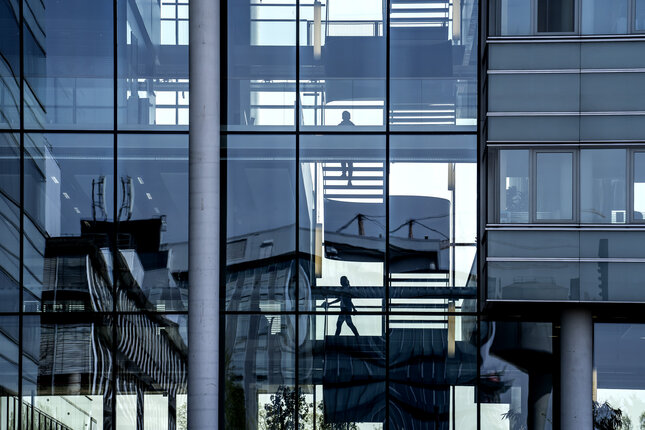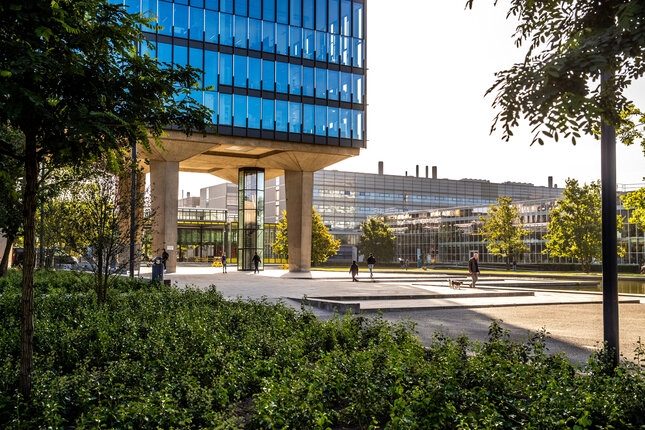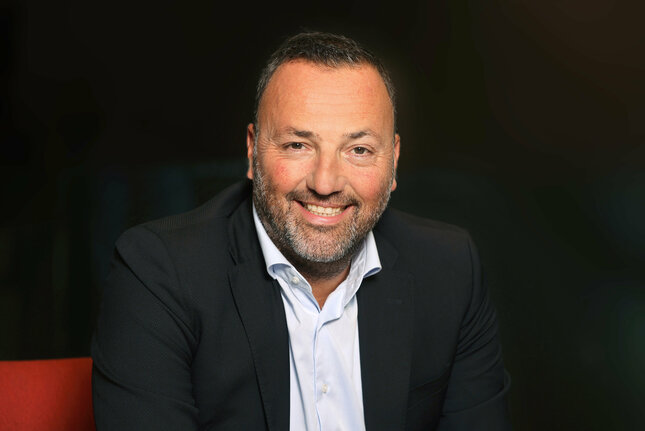‘Looking together at how we spend our money smartly’
TU/e has grown considerably in recent years and wants to continue to grow to 15,000 students in 2027. This requires additional investments for more space, especially laboratories for education and research.

TU/e has doubled in student numbers over the past decade, and that growth will continue through to 15,000 students in 2027. “Growth is also accompanied by growing pains, and lack of space is a major one,” says Patrick Groothuis, Vice President of the Executive Board. “We are therefore going to invest in more lab space and research infrastructure.” Additionally, recent years has seen a budget deficit mainly due to high inflation. To pay for the deficit and investments, services and departments are going to look together at where they can make savings over the next four years. This will be done university-wide, and with the premise that there will be no forced layoffs.
Like many other Dutch universities, our university faces financial challenges. “Almost all of us have multi-year deficits. Costs are rising, but revenues are not rising with them or are not adequately compensated,” says Executive Board Vice President, Patrick Groothuis.
Underlying this are inflation, increased labor costs, skyrocketing energy costs, growing housing costs, and strong growth in research as well as teaching to some extent.
Reserves
In both 2023 and 2024, our university faced a budget deficit of 27 million euros and a conscious choice was made to draw on reserves. Groothuis: “We can still absorb these deficits well due to the positive results of previous years. And can thus meet all the financial requirements.”
We have the advantage that we are in a growth scenario and can make smart financial choices.
Patrick Groothuis, Executive Board Vice President
Continue to invest
“Moreover, as a university, we want to continue to invest in our growth, in excellent research and teaching, and in our four research institutes,” Groothuis says.
TU/e aims to grow to 15,000 students by 2027. It is precisely in that growth that opportunities lie, Groothuis says. “We can make smart financial choices in our growth plans, while not all universities seem to have that luxury, as some of them unfortunately shrink rather than grow.”
Open-minded view of finances
In 2023 the Multi Annual Budget (MAB) working group, which includes deans, program directors and directors of services, was tasked with taking an open-minded view of how TU/e can remain financially healthy. And how room can be made on top of that for investment. “The proposals were adopted with the full backing of the deans, directors and Executive Board.”
Investing in square meters
In the meantime, departments are feeling the pressure on the available amount of square meters. "In the Flux building, they feel that the departments of Electrical Engineering and Applied Physics have grown significantly in recent years. That is largely thanks to their successes in acquiring research projects."
“More projects also means more researchers. And, therefore, a greater need for lab space and workspaces. We have already converted teaching spaces in Flux. There is serious pressure on the number of available square meters in Flux.”

Creative with space
Another example cited by Groothuis is the Biomedical Engineering department. “They have been creatively managing the limited lab space and workspaces for years by sharing labs within BME, but also with, for example, the Chemical Engineering & Chemistry faculty. It is bursting at the seams there because of the growth and successes of recent years, and for the future we simply need more space.”
“That growth in revenue from the second- and third-tier funding streams is fantastic, of course, but that doesn’t mean that there is also automatically more money from first-tier funding to pay for additional space as well,” Groothuis says. And that is where a bottleneck in our system has been identified.
Funding streams
Universities receive money from three streams. The first-tier funding stream comes directly from the government. The second tier consists of grants awarded by the Netherlands Organization for Scientific Research and the Royal Dutch Academy of Sciences. The third tier comes from contract research commissioned by national and international governments, non-profit institutions and companies.

We can only spend our money once.
Patrick Groothuis, Executive Board Vice President
“What we have to be very aware of is that we can only spend our money once. So, we cannot give everyone their own workroom, facilitate an expansion in lab space, create new teaching rooms and at the same time invest in research institutes. We have to make choices.”
“Within the campus development, we are therefore consciously investing in higher quality workspaces that can then be better shared. As a result, more resources are available for additional lab and teaching spaces.”
Inventory
To make wise choices, the Campus Development Working Group has been set up, led by Dorine Peters, director of Real Estate. “This working group will further identify where the greatest need for space lies and will develop scenarios in close cooperation with the deans involved.”

What will happen?
The MAB working group has identified three tracks where they see opportunities to make savings. These will be spread out over four years.
1: Services are going to cut their costs and fixed costs for buildings (such as energy and cleaning costs) and IT, for example. Robert van der Drift is project leader of this operation.
2: Departments will also cut their costs as well as generate additional revenue. Again, this will be a gradual process, and the savings will be made according to the available capacity. Ingrid Heynderickx is the project leader.
3: Co-financing infrastructure and working on better margins in second- and third-tier funded projects. Patricia Jaspers is in the lead for this project.
Together
Groothuis: “The most important thing is that we do it together. For example, when services make choices to do less of or stop an activity, they do so in consultation with the departments, testing the effect such a proposed measure may have. And cuts elsewhere can also be suggested. That kind of conversation is very important.”
Our departments are given the confidence to come up with savings that they deem sensible.
Patrick Groothuis, Executive Board Vice President
No layoffs
The starting point for savings is to keep everyone on board, Groothuis says. “We have a lot of vacancies and there is natural turnover in our services and departments. If someone retires, you may decide not to replace them. That’s also a way of making savings.”
Groothuis sees SQUAD, the self-assessment program of all TU/e services, coinciding with the cutbacks. “If we choose together to implement less customization and more standardization, we can also save costs,” he says.
How to proceed?
In May, the services and departments will submit their savings proposals. Groothuis knows that “the various working groups are already working hard on this challenge.” Those proposals serve as input for the budget memo due at the end of June, which will form the basis for TU/e’s multi-annual budget for the period 2025-2029.
Groothuis emphasizes that “our university is in good shape, we will grow from 13,000 to 15,000 students in the next few years, and we will continue to invest in our campus. But we must remain critical of our spending. And make sure that we can adjust financially. Fortunately, that’s something we do unassumingly and in good consultation.”

You have to continually evolve as an organization; that’s part of being a university.
Patrick Groothuis, Executive Board Vice President
“I can imagine that our community sometimes gets the feeling that we are playing chess on many boards at the same time with SQUAD, the possible future new governance structure of our university, and the values survey at the same time as the MAB project. But it is all aimed at the ongoing development of the organization. That is also part of being a university.”
“You have to keep improving and developing yourself. We all do that every day in our work, our teams, departments and services. Now we are doing that TU/e-wide. And we are doing it together, gradually, and with sensitivity.”
More on our strategy



Latest news



